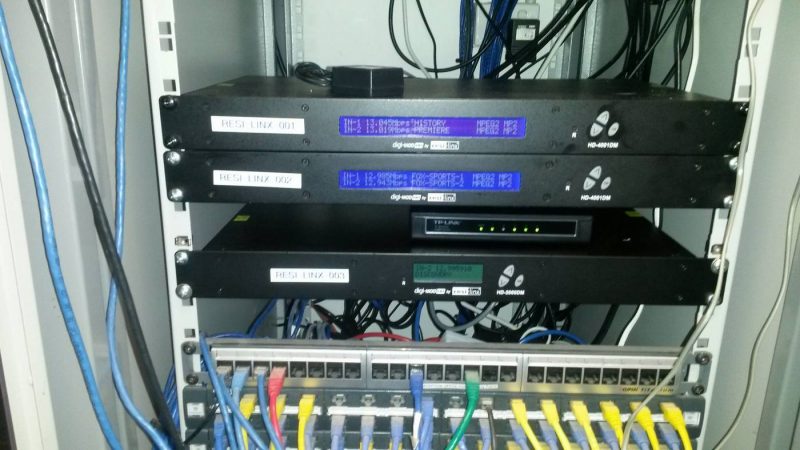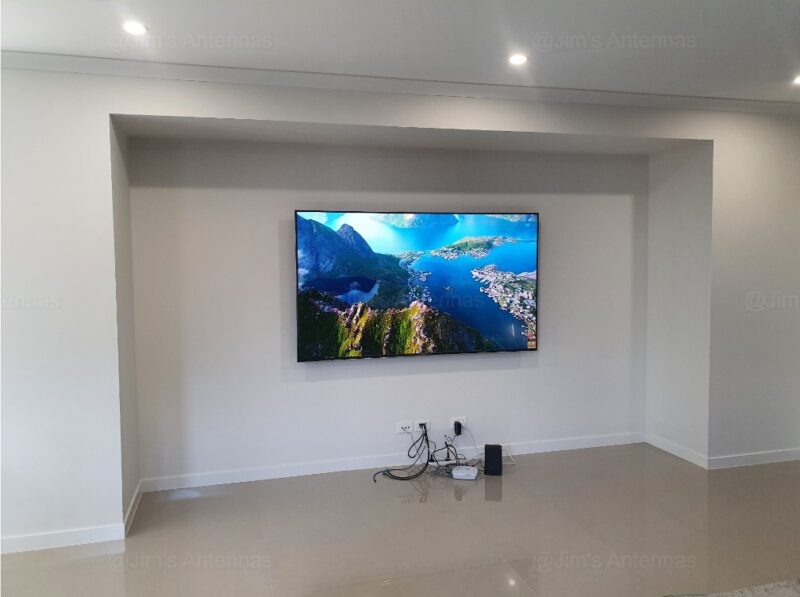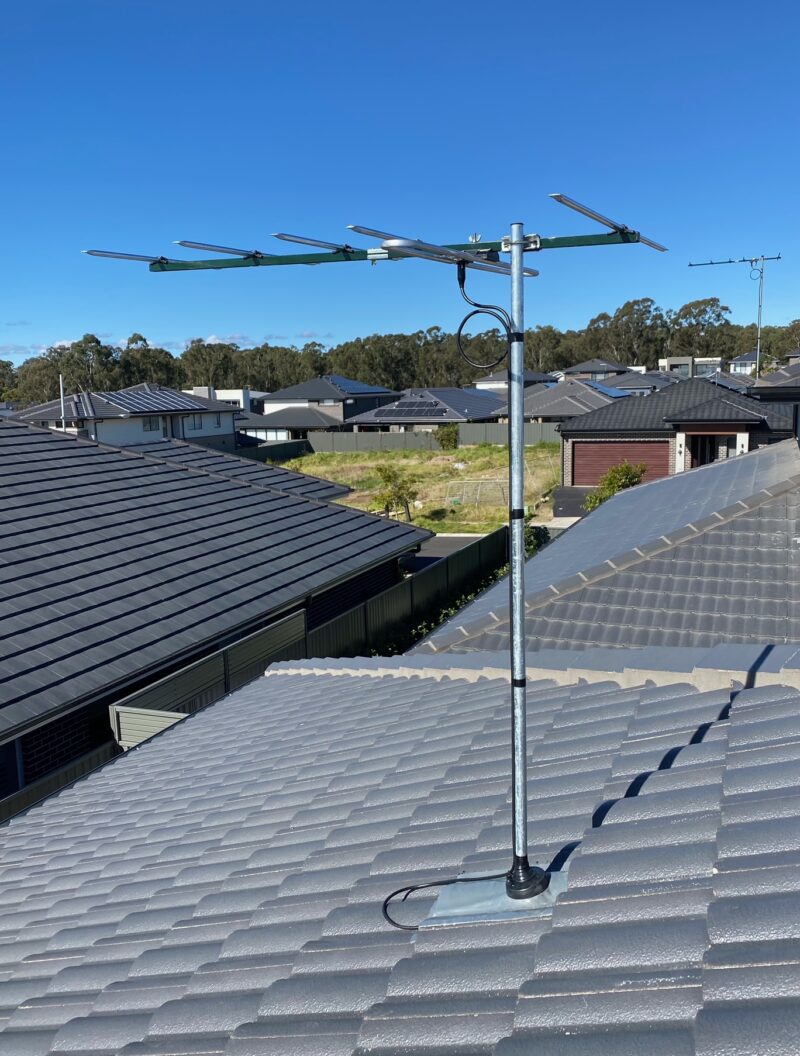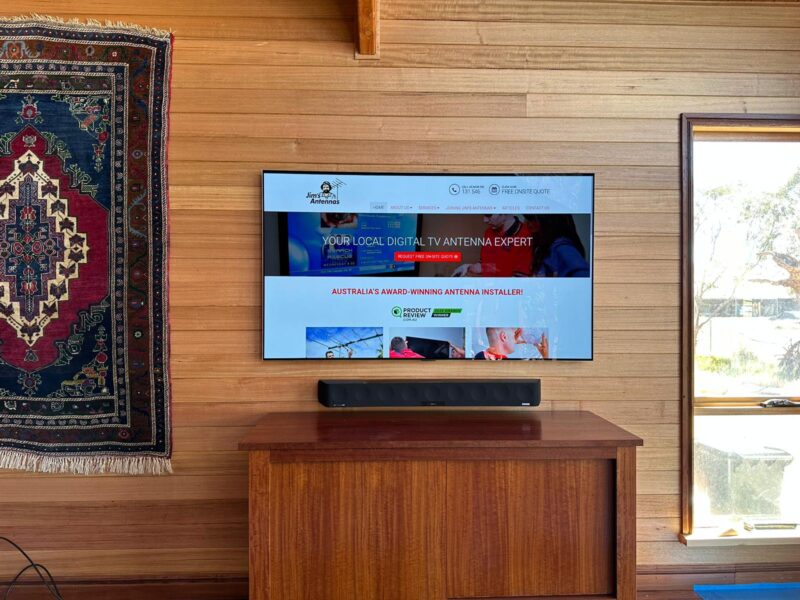How Much Does a TV Antenna Installation Cost?
Here at Jim’s Antennas, the cost of antenna installation usually begins at $299. However, while it’s good to have an idea for the baseline cost of such services, this number will vary from customer to customer. In most circumstances, until an antenna installer has visited a home, they cannot say exactly much installation will actually cost. It is for this reason our antenna installers provide each and every customer with a free onsite, no-obligation quote.
So what exactly are the factors that influence the cost of antenna installation?
Roof Type & Access
A flat roof often makes for a more complicated installation. This is because there is less room for cabling to be placed. While, in comparison it is usually easier to install antennas on pitched roofs as there is plenty of room for cabling. Therefore the cost of installation for homes with flat roofs is often slightly higher than those with pitched roofs. If it is difficult and dangerous for an installer to get up onto your roof, you can also expect to pay slightly more.
Additionally, the material of your roof (lead, tin, fascia board or tile) will determine the kind of mount needed and the price of mounting. For example, fascia and under tile mounts are generally cheaper than lead flashing mounts.
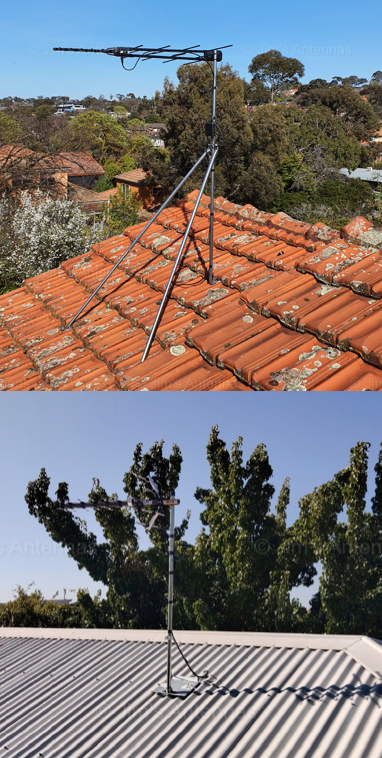
Existing Home vs New Build
While the construction of the rest of the home is generally not relevant in determining the price of antenna installations where an antenna is being connected to existing TV points , this is an important factor to consider if you are having both a new antenna and TV points installed.
When it comes to running cables, properties that have a non-standard build, such as full or double brick homes, Hebel and Foam construction, will make for a more difficult installation.
Many older homes have double brick construction whereby both internal and external walls are constructed using brick. This makes it harder to reach the often small, wall cavity. Similarly, modern homes constructed with Hebel panels usually have extremely tight or in some cases no wall cavities.
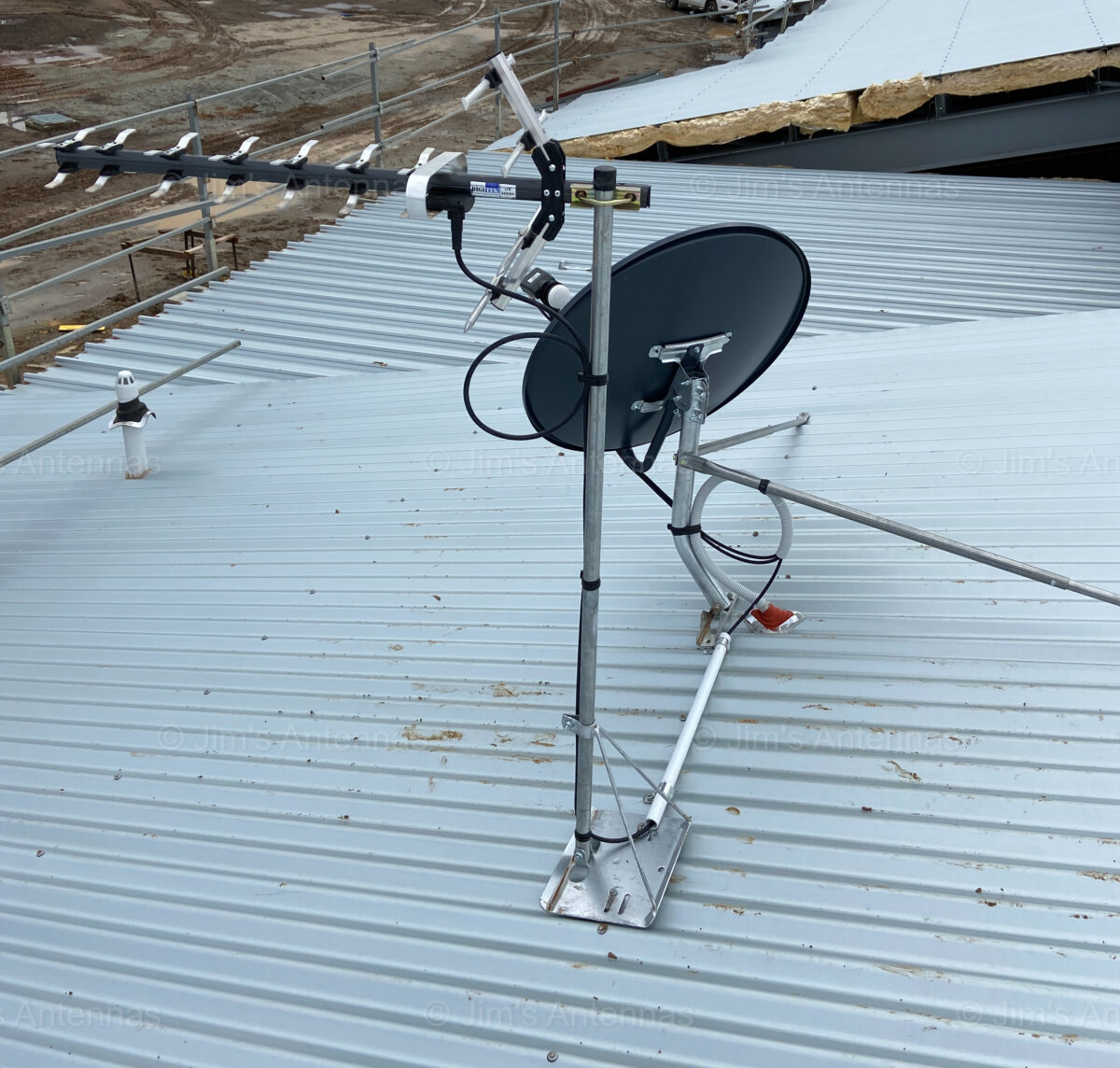
The above construction types increase the time spent installing new TV points and therefore the price. On the other hand, properties that have walls with larger cavities that are easier to access, such as brick veneer homes, are likely to be closer to the baseline cost.
If you are building a new home, pre-wiring is recommended as installation will be cheaper than adding new TV points once your home has already been constructed.
Location
Location is without a doubt the most important factor to consider when it comes to antenna installation. Not only will your exact location tell you what kind of antenna you need, but it will also determine the signal strength you are able to receive and whether you require additional equipment.
There are therefore several factors to consider when it comes to looking at how location influences cost:
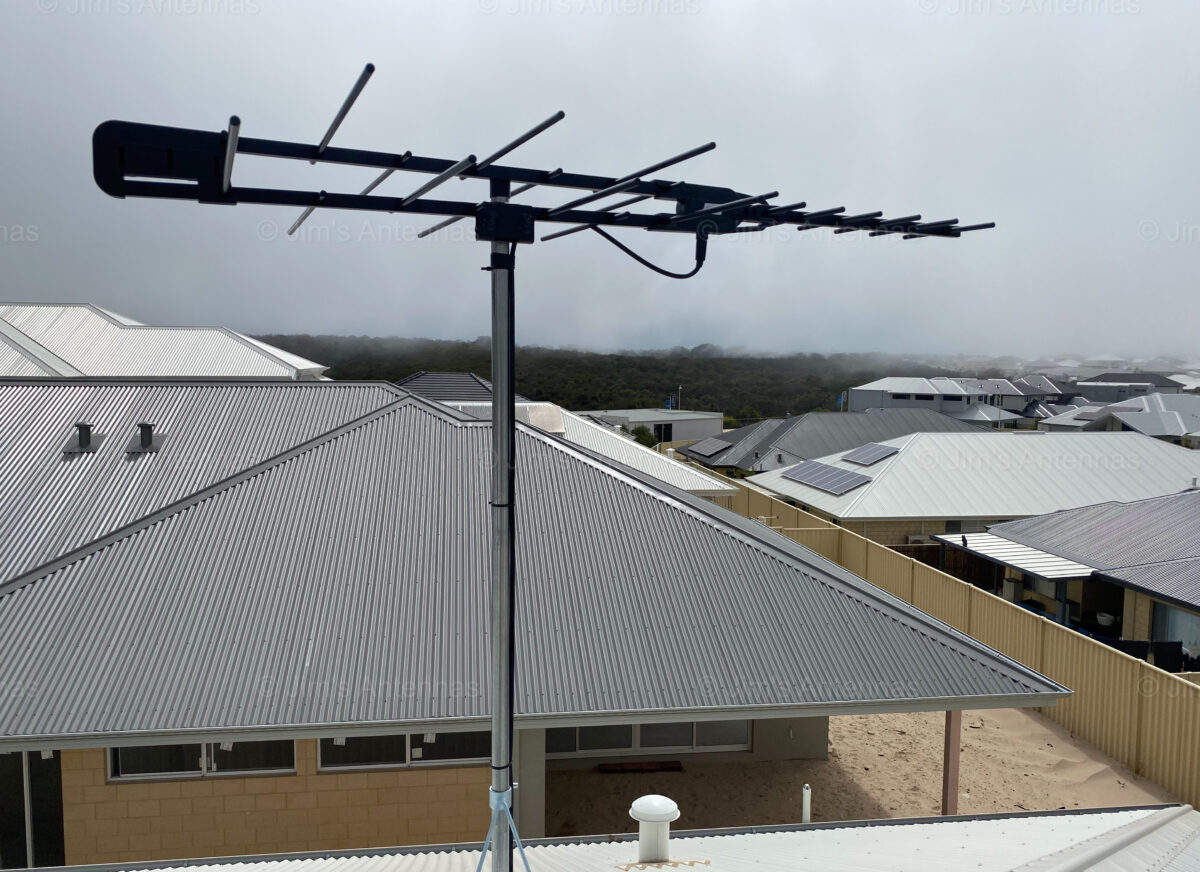
Type of Antenna
In some cases specialised, slightly more expensive antennas are recommended for specific locations. For instance, for homes exposed to salt air and sea spray, hot-dipped galvanised or aluminium antennas are preferred as they are less susceptible to rust and corrosion compared to antennas made of other metals such as copper. While slightly more expensive high-gain antennas may be recommended for homes in particularly low signal areas.
Additionally, while it may be tempting to choose a slightly cheaper imported antenna, we always recommend going for an Australian-made product. Our preferred brands include: Hills, Matchmaster or Digitek. Not only does each brand produce antennas and aerial equipment that can withstand Australian weather conditions such as strong winds, hot sun and salty air, but they also generally offer better warranty periods and conditions compared to their overseas counterparts.Your location will also determine whether you have a VHF or UHF antenna. While the prices across both types tend to be similar, combination antennas that receive both a UHF and VHF signal are typically more expensive. If you have both UHF and VHF towers in your area, a combination antenna will allow you to receive all of the available free-to-air channels.
Signal Strength and Line of Site
The strength of a signal, and whether or not there is a clear line of sight from your location will influence the complexity of installation and therefore the time and (as you will see below) equipment required to complete a job.
Additional Equipment
Amplifiers & Guyed masting
If you have multiple free-to-air TV points or low signal strength, you may need to add an amplifier to your antenna system or have your antenna installed using a guyed mast. These additional pieces of equipment will help reach an acceptable level of signal and significantly improve your viewing experience. While the cost of masthead amplifiers will depend on the size of your home and the number of TV outlets you want to connect your antenna to, the cost of guyed masting is largely determined by how tall your mast is.
Splitters
Splitters are used to distribute the signal received by an antenna with the number of TVs in a home. The cost of adding a splitter will depend on how many TVs you have. For example, a 6 way splitter will be more expensive than a 2 way splitter. Pricing typically begins from $30.
Attenuators
For those who live close to transmitter towers, an attenuator may be required to reduce incoming signal strength. While having a strong signal is often thought of as a plus, if a signal is too strong it can cause pixelation or burn out the TV’s tuner. An attenuator may therefore be needed to adjust the signal down to the correct level.
Bird-Proofing
Bird spikes are designed so that birds can’t land on your antenna and disrupt your signal. Depending on the quality and supplier of these spikes, they can range anywhere from $10 – $150. If buying your own, we recommend looking for a set that is made of clear acrylic and is UV resistant.
Ultimately, the cost of having an antenna installed can be boiled down to 3 key factors:
How hard will the installation be?
How long will it take?
Is additional or specialised equipment required?
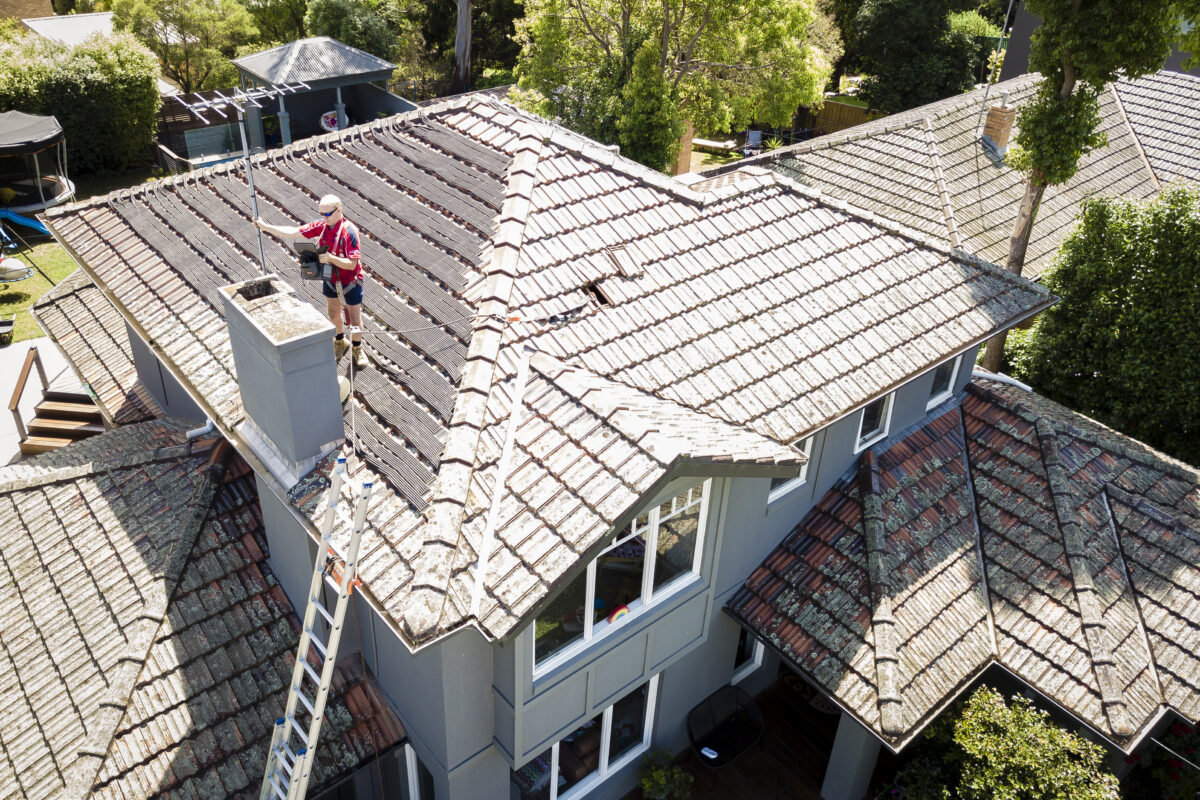
When reading about the cost of installation, it may be tempting to attempt to install your antenna by yourself, rather than paying someone else to do it for you. But, before climbing up onto your roof, take the time to consider whether you are able to install your antenna properly. Will you know which antenna to buy, how to position it and are you able to check signal strength? If you are uncertain about how to do these things – a DIY antenna installation may actually cost you more in the long run. At Jim’s Antennas our professional installers will always use their specialised tools and years of experience to ensure your antenna is installed to achieve the best signal possible.

